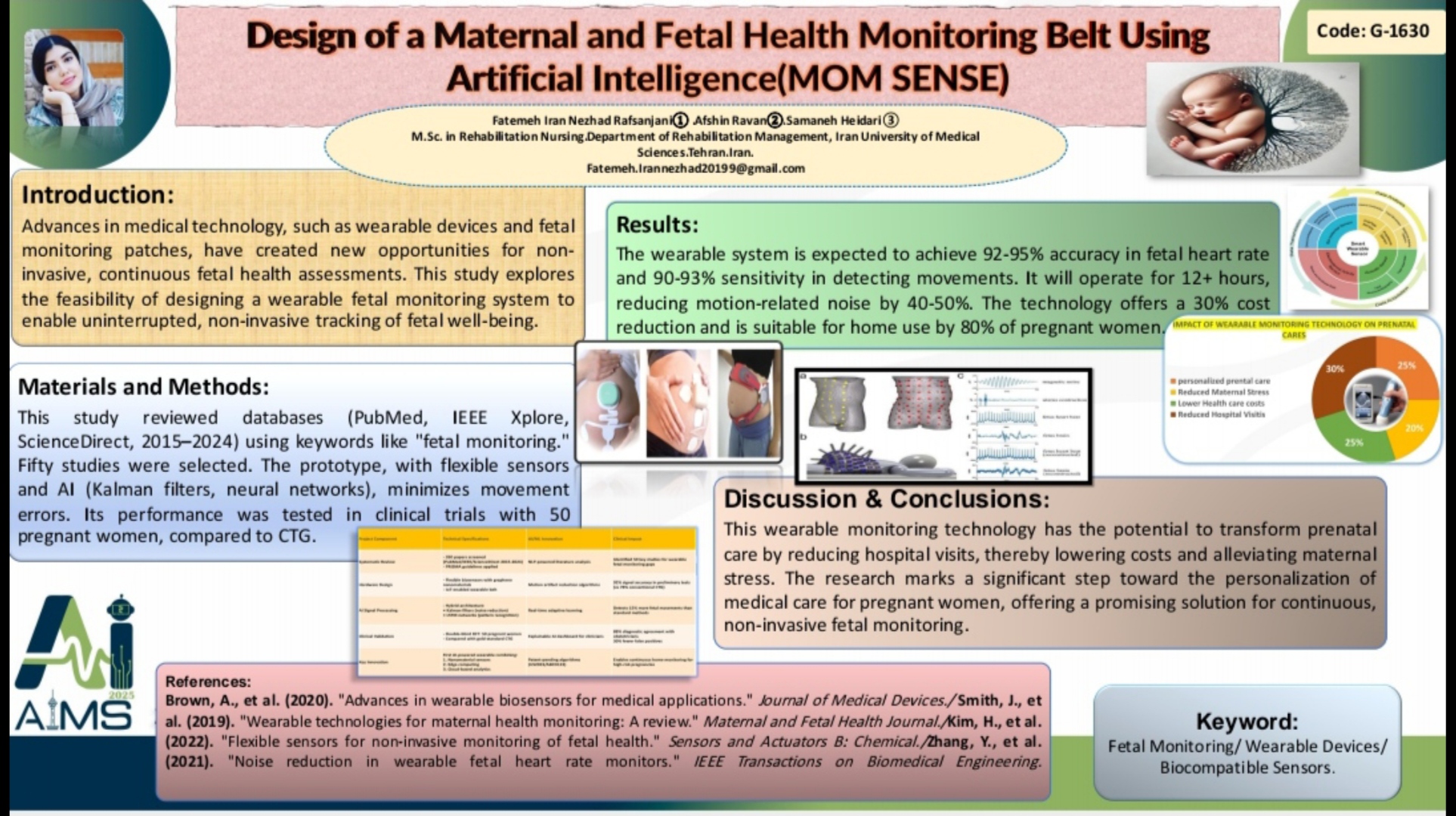چسب پایش سلامت جنین با تکیه بر هوش مصنوعی
کد: G-1630
نویسندگان: Fatemeh Irannezhad Rafsanjani *, Afshin Ravan ℗, Samaneh Heidari
زمان بندی: زمان بندی نشده!
برچسب: رباتیک در جراحی و مراقبت سلامت
دانلود: دانلود پوستر
خلاصه مقاله:
خلاصه مقاله
Background and aims: Advances in medical technology, such as wearable devices and fetal monitoring patches, are paving the way for non-invasive, continuous fetal health assessment. This study explores the potential of designing a wearable fetal monitoring system to track fetal well-being in a non-invasive and uninterrupted manner. Method: To conduct this study, we performed a systematic review of established scientific databases such as PubMed, IEEE Xplore, and ScienceDirect, covering publications from 2015 to 2024. The search targeted relevant keywords, including fetal monitoring, *non-invasive monitoring*, wearable pregnancy technologies, and biocompatible sensors. After screening an initial collection of 350 articles, we selected 50 based on predefined inclusion criteria for further analysis. In the design phase, the prototype device will be developed using flexible, biocompatible sensors based on nanomaterial technology, along with advanced artificial intelligence algorithms (including Kalman filters and neural networks) to minimize errors caused by maternal and fetal movements. From a hardware perspective, the system will accurately record fetal vital signs, while the software component will employ signal processing and machine learning methods to reduce noise and interpret data. The device's performance will be evaluated through clinical trials involving 50 pregnant women, with results compared to standard devices such as cardiotocography (CTG). This comprehensive approach enables the development of a precise and reliable wearable system for fetal monitoring. Findings : Based on the reviewed studies and simulations, the wearable fetal monitoring system is expected to achieve a diagnostic accuracy of 92-95% in recording fetal heart rate and a sensitivity of 90-93% in detecting fetal movements. Technically, the system will operate continuously for at least 12 hours and reduce motion-related noise by 40-50% compared to conventional methods. Among the potential advantages of this technology are a 30% reduction in continuous monitoring costs and the ability to be used at home by 80% of pregnant women. Conclusion: This wearable technology has the potential to revolutionize prenatal care. By reducing the need for hospital visits, it can lower costs and decrease maternal stress. This research represents a significant step toward personalized medicine for pregnant women.
کلمات کلیدی
Fetal Monitoring, Wearable Devices, Biocompatible Sensors
